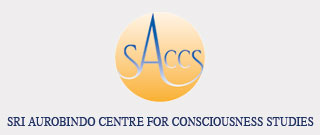WRITINGS BY THE MOTHER
© Sri Aurobindo Ashram Trust
Self-observation
9 April 1958
[...] In order to find the soul you must go in this way (gesture of going deep within), like this, draw back from the surface, withdraw deep within and enter, enter, enter, go down, down, down into a very deep hole, silent, immobile, and there, there's a kind of... something warm, quiet, rich in substance and very still, and very full, like a sweetness--that is the soul.
And if one is insistent and is conscious oneself, then there comes a kind of plenitude which gives the feeling of something complete that contains unfathomable depths in which, should one enter, one feels that many secrets would be revealed... like the reflection in very peaceful waters of something that is eternal. And one no longer feels limited by time.
One has the feeling of having always been and of being for eternity.
That is when one has touched the core of the soul.
And if the contact has been conscious and complete enough, it liberates you from the bondage of outer form; you no longer feel that you live only because you have a body. That is usually the ordinary sensation of the being, to be so tied to this outer form that when one thinks of "myself" one thinks of the body. That is the usual thing. The personal reality is the body's reality. It is only when one has made an effort for inner development and tried to find something that is a little more stable in one's being, that one can begin to feel that this "something" which is permanently conscious throughout all ages and all change, this something must be "myself". But that already requires a study that is rather deep. Otherwise if you think "I am going to do this", "I need that", it is always your body, a small kind of will which is a mixture of sensations, of more or less confused sentimental reactions, and still more confused thoughts which form a mixture and are animated by an impulse, an attraction, a desire, some sort of a will; and all that momentarily becomes "myself"--but not directly, for one does not conceive this [old p. 311]"myself" as [new p. 311]independent of the head, the trunk, the arms and legs and all that moves--it is very closely linked.
It is only after having thought much, seen much, studied much, observed much that you begin to realise that the one is more or less independent of the other and that the will behind can make it either act or not act, and you begin not to be completely identified with the movement, the action, the realisation--that something is floating. But you have to observe much to see that.
And then you must observe much more still to see that this, the second thing that is there, this kind of active conscious will, is set in motion by "something else" which watches, judges, decides and tries to found its decisions on knowledge--that happens even much later. And so, when you begin to see this "something else", you begin to see that it has the power to set in motion the second thing, which is an active will; and not only that, but that it has a very direct and very important action on the reactions, the feelings, the sensations, and that finally it can have control over all the movements of the being--this part which watches, observes, judges and decides.
That is the beginning of control.
When one becomes conscious of that, one has seized the thread, and when one speaks of control, one can know, "Ah! Yes, this is what has the power of control."
This is how one learns to look at oneself.
Collected Works of The Mother, First Edition, Volume 09, pp. 310-11

